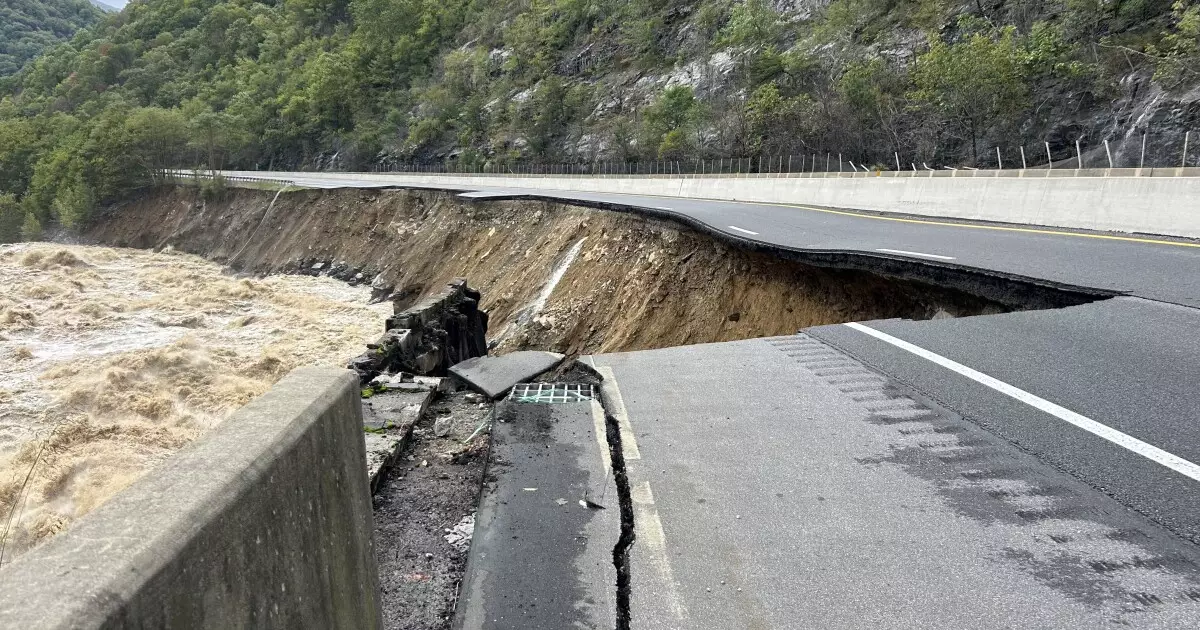In recent reports, the intention of President Donald Trump to significantly diminish the workforce of a crucial federal program aimed at natural disaster relief has evoked serious apprehensions within the analytical community. This potential reduction in staffing—by as much as 84%—raises substantial questions about the federal government’s commitment to effective disaster management and recovery processes.
The discussions surrounding potential cuts are not merely a reflection of budgetary concerns, but rather indicative of a broader philosophical shift regarding the role of federal agencies in disaster response. Trump’s administration has reportedly signaled a willingness to dismantle the Federal Emergency Management Agency (FEMA), another critical agency responsible for disaster aid. Such sweeping changes suggest a pivot towards delegating disaster response efforts more heavily to state and local governments, which, while theoretically plausible, invites scrutiny regarding the effectiveness of state-level disaster management structures.
Critics, including David Victor, a professor at the University of California, San Diego, highlight the potential for political backlash. Victor warns that the impending narrative reshaped by these staff cuts could mirror the adverse repercussions faced by George W. Bush’s administration due to its criticism following Hurricane Katrina and Rita in New Orleans. Such historical comparisons evoke strong imagery of mismanagement, which may not only affect public sentiment but also have tangible ramifications for political stability.
The proposed staffing reductions at the Office of Community Planning and Development, a key component under the Department of Housing and Urban Development (HUD) that administers the Community Development Block Grant-Disaster Recovery (CDBG-DR) program, forewarn of likely challenges in disbursing aid. Matt Fabian from Municipal Market Analytics starkly emphasizes that such substantial changes might lead to a slower and more error-prone process in distributing disaster relief funds. This prediction is particularly troublesome, considering the already protracted timeline seen in federal disbursement of relief funds.
Historical data underscores this concern: following the devastating hurricanes in Puerto Rico in 2017, it was reported that nearly two-thirds of the promised federal aid had yet to be disbursed as of the beginning of fiscal year 2025. This history of slow recovery is compounded by the anticipation that the CDBG grants, which constitute a vital component of this aid, would actually see even longer delays under current proposed reforms.
Trump advocates for a shift toward empowering state governments, arguing that they would better handle disaster response and funding distributions without FEMA’s involvement. North Carolina’s Governor Josh Stein exemplifies this sentiment with his recent request for a staggering $19 billion in federal disaster funding, an amount indicative of the pervasive impact of Hurricane Helene. While the call for decentralized management might seem practical at first glance, complexities arise when considering the varied capabilities of state governments when faced with wide-scale disasters.
The reality is that many state governments may lack the necessary resources or expertise that agencies like FEMA provide. As seen in North Carolina, where the state already received $3.17 billion in allocations but still falls short of meeting its needs, the argument for state-level management becomes increasingly precarious. The total damages assessed from Hurricane Helene alone were nearly $60 billion, exposing significant vulnerabilities in local recovery frameworks.
The prospect of drastically cutting disaster aid programs raises alarms about the overarching strategies employed in managing federal assistance during emergencies. If trends from the past inform us anything, it is that disaster recovery is a multifaceted endeavor that requires a coordinated response from all levels of government. An effective approach demands not only adequate funding but also a well-trained workforce equipped to respond efficiently to disasters when they strike.
It remains to be seen how the proposed cuts will play out in practice and what implications they will have for future disaster response. Analysts and concerned citizens alike must remain vigilant, advocating for intelligent reforms that prioritize public safety and resilience over ideological shifts that lean towards austerity. Only time will reveal the true cost of these proposed changes, but the stakes, particularly in the face of inevitable natural disasters, could not be higher.

